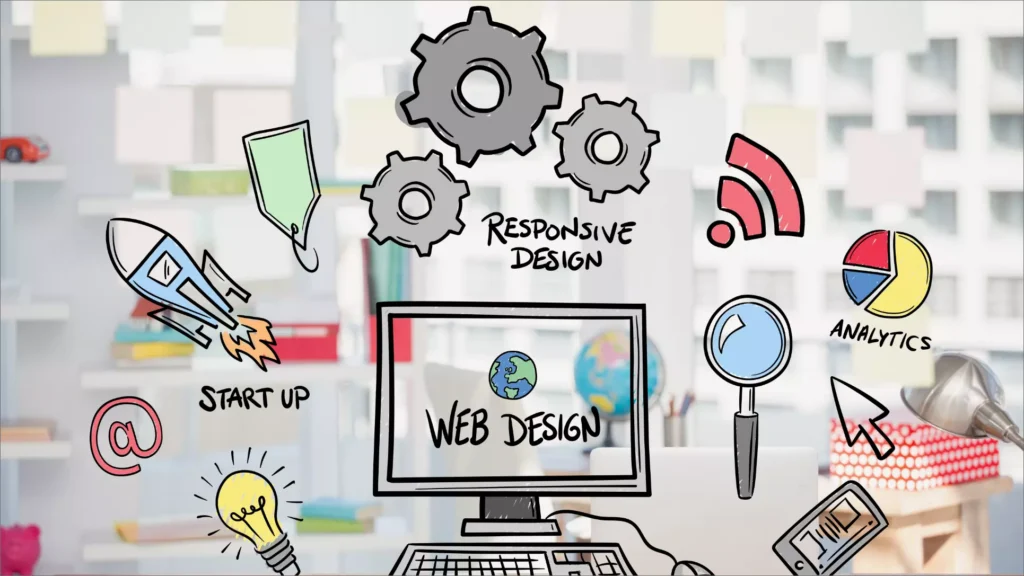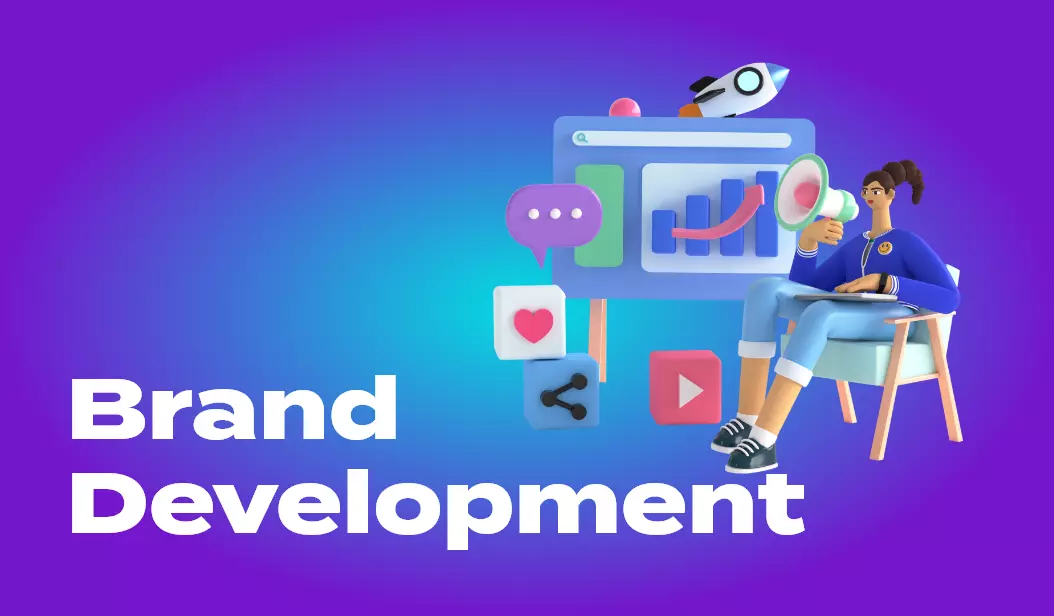Brand Development – Step by Step Complete Guide
Your brand is perhaps the most valuable asset of your professional services firm. Building a brand from scratch is not easy, but brand development is crucial for you if you want to stand out in the business world.
No matter if your business is on a corporate or personal level, you must be a part of brand development. It is the way that describes how you communicate ideas and values about your business. It includes all the activities that create a specific image of a company in the eyes of customers.
Whether you have nothing but a business idea or want to improve your existing brand development strategy here, we are going to explain everything you need to know to build a strong brand identity.
What Is Brand Development?
Brand development is a strategic process of defining, refining, and testing your brand strategy. It helps you distinguish your company’s products and services from competitors.
We made this guide to help firms in creating their brand, and we divided this process into three phases which are as follows:
- The first phase is creating a brand strategy that is aligned with your business objectives.
- The second phase includes developing all the tools and finding ways to communicate your brands, such as a website, logo, and tagline.
- The last phase consists of putting all the effort into strengthening your newly developed brand.
A brand development strategy means how you will accomplish these tasks.
Step By Step Guide To Create Brand Development Strategy

Brand development is a complex process, so we have divided it into 10 easy steps:
1. Identify Your Target Audience
You know very well what you are going to sell, and you also have an idea of what you would like to say about it. However, the important thing here is to identify who exactly wants to hear it.
Target audience means people who are most relevant because they can directly affect your business as well as brand development.
Try to focus on as many characteristics of your customers as you can. It may include behaviors, values, interests, and other socio-demographic categories. Once you identify these characteristics, try to validate your assumptions through online and offline research.
You can get data by conducting surveys and exploring relevant forums and social media platforms. The idea is that once you get a detailed profile description of all the people interested in buying your products, you will get a better understanding to approach them and build a positive image of your brand.
2. Define Your Mission And Vision
In a business, all of your activities must have a goal, and the common goal of all your combined business activities is supposed to define your mission statement. You must have a clear reason for running a business other than simply making money.
However, your goal or mission needs to resonate with your target audience. Maybe your product or service helps to solve a specific problem or targets a specific group of customers.
Your vision statement is how things look once you achieve your goal. Your mission statement helps appeal to customers’ values and beliefs, while your vision statement is used to connect with customers’ expectations and dreams.
These short vision and mission statements should be created in such a way that they convey your subconscious message. With such a message you can create an image in people’s minds and lay a strong foundation for your brand.
In addition, these statements tell you What activities you should do and what you have to avoid.
For example, you can’t sponsor organizations if you own a company that fights against global warming. This type of activity can ruin your reputation.
3. Identify and Analyze Your Competitors
Competitors analysis is an important step in brand development. It is a process to evaluate the behavior of your competitors and find their position in the market. It also helps you find the activities which allow them to maintain this position.
You can look at their content, which can be anything from blogs and website descriptions to PR statements. By doing so, you can find how this content is helping them to achieve their brand development goals.
If you want to get the best results, always go one step further in your analysis. If you found any action that has brought results, figure out the underlying problem they were trying to solve.
Once you get all the information behind the curtain, it might be easier for you to respond to similar topics in a way that fits best with your vision and mission. Pay attention to your competitors’ mistakes because these failure analyses can also be very useful.
Always keep in mind to refrain from directly imitating or copying what your competitors are doing.
4. Develop Your Brand Positioning
Now you are all set to determine your firm’s brand positioning in the professional services marketplace. How is your brand different from others, and why do certain clients within your target audience work with you?
A positioning statement is usually not longer than three to five sentences and it is the essence of your brand positioning. Always make sure that it is based on reality so that you can deliver what you promise. It should also be a bit aspirational so that you must have something to strive for.
5. Develop Your Name And Logo Design
If you are a new firm, you will need to develop a brand name logo and tagline. Usually, when anyone thinks of the term brand, they have it in their mind. It is also an essential step for brand development.
Brand name and logo can better support your brand positioning. However, if you do make a proper foundation, it will be equivalent to throwing darts with a blindfold on. It will not make any sense and will end poorly.
To create a brand name logo and tagline, you have to keep in mind all things you have discovered in previous steps. Always think of a name that is concise, memorable, and related to your product or service. Once you have decided on your brand name, you can move on to logo design.
Although it is accessible and cheaper to create a logo, for better results, you have to consult a professional and pay some money. These are investments that business owners do not find useful because they never know what they could have done with a better logo. We suggest you consult a professional designer so that you will not experience the downfall of having a bad logo.
You may find a number of free tools that help you create your own logo. These tools also provide your image and icon suggestions according to your brand name. You can also choose colors and fonts of your choice. You can create logo designs that will be perfect for creating a brand identity that people remember.
6. Develop Your Messaging Strategy
The next step in brand development is making a strategy that translates your brand into a message for your target audience. Target audiences usually include potential clients, referral sources, potential employees, and other influencers.
Although the core brand positioning is the same for all audiences, each audience will have an interest in different aspects of it. Your brand message to each audience will emphasize the most relevant points.
Each audience has different aspects that must be addressed, and each needs different types of evidence supporting your message.
A good messaging strategy should address all the needs of the audience. It is important to make your brand relevant to your target audience.
7. Create Content Marketing Strategy
We can also call this step “create your marketing strategy,” but we call it content marketing strategy. You may be wondering why?
It is because content market strategy is well suited for professional services in the age of the internet. It will do all the things traditional marketing does but more efficiently. It uses valuable educational content to attract customers and nurture prospects.
Always keep in mind that your brand strength is driven by both visibility and reputation. If you increase visibility without strengthening your reputation, there are fewer chances of being successful. It is a reason that traditional awareness advertising and sponsorship can not bring the expected results.
In contrast, content marketing helps you improve both visibility and reputation simultaneously. Furthermore, making your brand relevant to the target audience is helpful.
8. Develop Your Website

A website for your business is the most important brand development tool. It is a place where all your audience turns to find out what you do, what your products or services are, and who your clients are. potential customers may not choose your services or products solely based on your website, but they may reject you if your site sends any wrong message.
In addition, this website will be home to your valuable content. This content is the focus of search engine optimization efforts so that your target audience, potential employees, or referral resources can find you easily and read about your firm. Online content is a primary part of modern brand development strategy.
Nowadays, professional services websites are of two types. The first is a branding site, which tells your customers a story and conveys who you are, what you do, and whom you serve.
Simply, it conveys your brand message. The other type of website does more and generates potential new clients. Such websites are known as high-performance websites.
9. Build A Marketing Toolkit
The next step of brand development is to create the remainder of your marketing toolkit. It may include one-page sales sheets describing core services or key markets served. In addition, there may be an e-brochure about your firm or a brief pitch deck that gives an overview of your firm.
Increasingly, your marketing tool kit may also contain videos. These videos may include topics like the firm’s overview, meeting the partner, or case studies.
If you prepare this marketing toolkit appropriately, it will serve both a business development and brand development function.
10. Implement, Track And Adjust
The final step in brand development is one of the most crucial steps. Obviously, a brand development strategy can only do much good if it is implemented properly. You may be surprised how often it happens.
A brand development strategy was developed and started with all good intentions, but then everything changed. People get busy with lenient work and put off-brand development tasks, and ultimately these tasks are forgotten.
That is why tracking plays an important role. We recommend both the implementation as well as the results. You have to track whether a strategy is implemented as planned or not. What happened with the objective measures, such as web visitors and search traffic? How many new leads and partnering opportunities are generated?
By tracking the whole process, you can ensure you are moving in the right direction to achieve your goals and also make the right adjustments where needed.
Why Is Brand Development Important?
Marketing is all about how you communicate with your audience, and brand development is important. Your product or service becomes a brand as a result of marketing efforts. Other than that developing a brand is a complex process that goes deep down into the core of the business and through each and every single aspect of it.
It is a continuous process. You can always say that you have yet to finish creating your brand development strategy. It does not work in that way, and it is a reason that most business owners are concerned about how to develop a brand.
Final Thought - Brand Development
Once you understand all the steps of brand development strategy, you need to consider how they are interconnected. All these steps are interwoven so that when you work in one area, it will give you ideas about other aspects too.
The key takeaway is that do not be afraid to take one step back when you feel it is necessary. For instance, you may have a clear vision or a noble mission but are still looking for a target audience, so you have to make certain changes to the previous step.
Sometimes you can get better results when you combine steps or work on different things at the same time. For example, analyzing the content and activities of your competitors can help you find your target audience. Also, consulting with a professional and reputable website development company helps you strategize your website for your potential clients from the start.
If you follow all the steps we mention for brand development, you can easily reach your customers and achieve your goals within a short time.
Read More : Goal Getter – How to Be a Goal Getter
Read More : What is 4C’s Marketing Model for Business?
